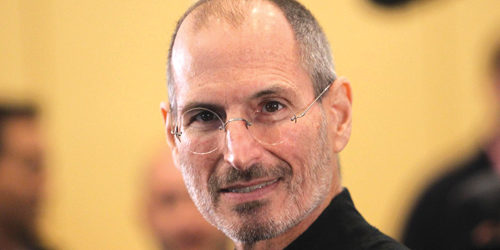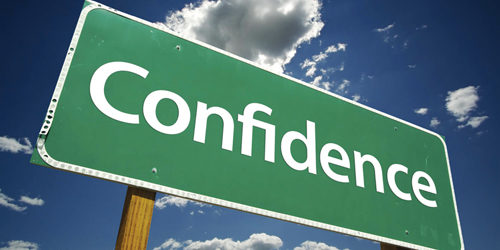
By Maarten Hoffmann
There are many things that could be said to have changed the way we live - penicillin, electricity, oil, the internal combustion engine, and I could go on, of course, but within this generation, it would have to be the Internet and Apple.
The Internet, or World-Wide Web, was a British invention by Sir Timothy John Berners-Lee, who implemented the first successful communication between a Hypertext Transfer Protocol (HTTP) client and server via the Internet in November 1989. Before then, we were mailing letters written on a typewriter, telephoning each other and getting a bit excited about telex.
The Internet is a passive invention that sits there waiting to be utilised, and IBM, Amstrad and Microsoft all entered the race to be the machinery of choice for the generation that woke up to what the Internet could actually do. Only the visionaries Steve Jobs and Bill Gates really saw the power that could be unleashed, but only Jobs realised that there was much more besides the computer that could come on-stream and that would truly revolutionise our lives in the areas of personal computers, animated movies, music, phones, tablets and digital publishing.
Born in 1955, Jobs was adopted by Paul and Clara Jobs and lived in Germantown, Wisconsin. His biological parents, Abdulfattah Jandali and Joanne Schieble gave Jobs up for adoption in 1954 and, later, Jobs would become upset when they were referred to as his ‘adoptive parents,’ and he would say that “they are my parents 1,000%” (demonstrating an odd misunderstanding of mathematic principles) and referred to his biological parents as “my sperm and egg bank.” There has been much made of the fact that Abdulfattah was Syrian, from the town of Homs, and without immigration there would be no Steve Jobs and no Apple.
Paul and Clara adopted Jobs’s sister Patricia in 1957 and the family moved to Mountain View, California in 1961. It was during this time that Paul built a workbench in his garage for his son in order to “pass along his love of mechanics.” Jobs, meanwhile, admired his father’s craftsmanship “because he knew how to build anything. If we needed a cabinet, he would build it. When he built our fence, he gave me a hammer so I could work with him… I wasn’t that into fixing cars ... but I was eager to hang out with my dad.” By the time he was ten, Jobs was deeply involved in electronics and befriended many of the engineers who lived in the neighbourhood. He had difficulty making friends with children his own age, however, and was seen by his classmates as a loner.
As Jobs had difficulty functioning in a traditional classroom and tended to resist authority figures, he frequently misbehaved and was suspended a few times. As Clara had taught him to read as a toddler, Jobs stated that he was “pretty bored in school and turned into a little terror... you should have seen us in the third grade, we basically destroyed the teacher.” At Monta Loma Elementary school in Mountain View, he frequently played pranks on others. However, his father (who was abused as a child) never reprimanded him, blaming the school instead for not challenging his brilliant son enough.
Jobs would later credit his fourth grade teacher, Imogene ‘Teddy’ Hill, with turning him around: “She taught an advanced fourth grade class and it took her about a month to get hip to my situation. She bribed me into learning. She would say, ‘I really want you to finish this workbook. I’ll give you five bucks if you finish it.’ That really kindled a passion in me for learning things! I learned more that year than I think I learned in any other year in school. They wanted me to skip the next two years in grade school and go straight to junior high to learn a foreign language, but my parents very wisely wouldn’t let it happen.” Jobs skipped the fifth grade and transferred to the sixth grade at Crittenden Middle School in Mountain View, where he became a “socially awkward loner.” Jobs “was often bullied” and gave his parents an ultimatum: they had to either take him out of Crittenden or he would drop out of school. Although the Jobs family was not well-off, they used all of their savings to buy a new home.
Thus, in 1967, the Jobs family moved to a three-bedroom home on Crist Drive in Los Altos, California, which was in the better Cupertino School District, Cupertino, California (this home – the first site for Apple Computer – was declared an historic site). The new house was embedded in an environment that was even more heavily populated with engineering families, and Bill Fernandez, a fellow electronics hobbyist who was in the same grade as him at Cupertino Junior High, was his first friend after the move. Fernandez later commented that “for some reason the kids in the eighth grade didn’t like Steve, because they thought he was odd. I was one of his few friends.” Fernandez eventually introduced Jobs to 18-year-old electronics whiz and Homestead High alumn Steve Wozniak, (Apple co-Founder) who lived across the street from Fernandez. In mid-1968, when he was 13, Jobs was given a summer job by Bill Hewlett (of Hewlett Packard) after Jobs cold-called him to ask for parts for an electronics project: “He didn’t know me at all, but he ended up giving me some parts, and he got me a job that summer working at Hewlett-Packard on the line, assembling frequency counters…well, assembling may be too strong. I was putting in screws. It didn’t matter; I was in heaven.”
Things changed for Jobs in the 1970’s when he got stoned for the first time and discovered Bob Dylan, Shakespeare and Dylan Thomas. Jobs was far too smart and intellectual to actually be a hippy, and most of the time too stoned to be an intellectual, and therefore didn’t fit into any group and remained an outsider. He was an individual, in a world where individuality was suspect.
In 1973, Steve Wozniak designed his own version of the classic video game Pong. After finishing it, Wozniak gave the board to Jobs, who then took the game down to Atari, Inc. in Los Gatos, California. Atari thought that Jobs had built it and gave him a job as a technician. Atari’s co-founder Nolan Bushnell later described him as “difficult but valuable,” pointing out that “he was very often the smartest guy in the room, and he would let people know it.”
Jobs traveled to India in mid-1974 to visit Neem Karoli Baba at his Kainchi ashram with his friend (and eventual Apple employee) Daniel Kottke, in search of spiritual enlightenment. Upon his return, Jobs had changed his appearance; his head was shaved and he wore traditional Indian clothing. During this time, Jobs experimented with psychedelics, later calling his LSD experiences “one of the two or three most important things l have done in my life.” He spent a period at the All One Farm, a commune in Oregon and Brennan joined him there for a period where they continued their journey into LSD and became practitioners of Zen Buddhism. Jobs would later say that people around him who did not share his countercultural roots could not fully relate to his thinking.
Jobs then returned to Atari and was assigned to create a circuit board for the arcade video game Breakout. According to Bushnell, Atari offered $100 for each TTL chip that was eliminated in the machine. Jobs had little specialised knowledge of circuit board design and made a deal with Wozniak to split the fee evenly between them if Wozniak could minimise the number of chips. Much to the amazement of Atari engineers, Wozniak reduced the TTL count to 46, a design so tight that it was impossible to reproduce on an assembly line. According to Wozniak, Jobs told him that Atari gave them only $700 instead of the $5,000 they actually paid, and that Wozniak’s share was thus $350. Wozniak didn’t learn about the actual bonus until ten years later, but said that if Jobs had told him about it and explained that he needed the money, Wozniak would have given it to him.
Wozniak had designed a low-cost digital “blue box” to generate the necessary tones to manipulate the telephone network, allowing free long-distance calls. Jobs decided that they could make money selling it. The clandestine sales of the illegal “blue boxes” went well and perhaps planted the seed in Jobs’s mind that electronics could be both fun and profitable. Jobs, in a 1994 interview, recalled that it took six months for him and Wozniak to figure out how to build the blue boxes. Jobs said that if not for the blue boxes, there would have been no Apple. He states it showed them that they could take on large companies and beat them.
Jobs began attending meetings of the Homebrew Computer Club with Wozniak, and in 1976 Wozniak invented the Apple I computer. After Wozniak showed it to Jobs, who suggested that they sell it, they and Ronald Wayne formed Apple Computer in the garage of Jobs’s Los Altos home. Wayne stayed only a short time, leaving Jobs and Wozniak as the active, primary co-founders of the company. A neighbour recalled Jobs as odd, an individual who would greet his clients “with his underwear hanging out, barefoot and hippie-like.” Another neighbour, Larry Waterland, who had just finished his PhD at Stanford in chemical engineering, recalled dismissing Jobs’s budding business:
“You punched cards, put them in a big deck,” he said about the mainframe machines of that time. “Steve took me over to his garage, where he had a circuit board with a chip on it, a DuMont TV set, a Panasonic cassette tape deck and a keyboard. He said, ‘This is an Apple computer.’ I said, ‘You’ve got to be joking.’ I dismissed the whole idea.” Jobs’s friend from College and India, Daniel Kottke, recalled that he “was the only person who worked in the garage ... Woz would show up once a week with his latest code. Steve Jobs didn’t get his hands dirty in that sense.”
Kottke also stated that much of the early work took place in Jobs’s kitchen, where he spent hours on the phone trying to find investors for the company. In 1977, Jobs and Wozniak introduced the Apple II at the West Coast Computer Faire. It was the first consumer product sold by Apple Computer and was one of the first highly successful mass-produced microcomputer products. It was designed primarily by Steve Wozniak, whilst Jobs oversaw the development of the Apple II’s unusual case and Rod Holt developed the unique power supply.
By 1978, Jobs was worth a million dollars when he was 23, 10 million when he was 24, and over 100 million when he was 25. He was also one of the youngest people ever to make the Forbes list of the nation’s richest people – and one of only a handful to have done it themselves, without inherited wealth.
In early 1984, Apple introduced the Macintosh, and the following year Apple aired a Super Bowl television commercial titled “1984.” At Apple’s annual shareholders meeting on January 24, 1984, an emotional Jobs introduced the Macintosh to a wildly enthusiastic audience in a scene described as pandemonium. This explains the roots of his tendency to launch each new Apple product, standing centre stage with a wildly hyperactive audience.
In 1978, Apple recruited Mike Scott from National Semiconductor to serve as CEO for what turned out to be several turbulent years. In 1983, Jobs lured John Sculley away from Pepsi-Cola to serve as Apple’s CEO, asking, “Do you want to spend the rest of your life selling sugared water, or do you want a chance to change the world?”
Despite the fanfare, the expensive Macintosh was a hard sell. Shortly after its release in 1985, Bill Gates, then developing Microsoft, threatened to stop developing Mac applications unless it was granted a license for the Mac operating system software.
Microsoft was developing its graphical user interface ... for DOS, which it was calling Windows and didn’t want Apple to sue over the similarities between the Windows GUI and the Mac interface. Sculley granted Microsoft the license, which later led to problems for Apple. In addition, cheap IBM PC clones that ran on Microsoft software and had a graphical user interface began to appear. Although the Macintosh preceded the clones, it was far more expensive, so through the late ‘80s, the Windows user interface was getting better and better and was thus taking increasingly more share from Apple. Windows-based IBM-PC clones also led to the development of additional GUIs, such as IBM’s TopView or Digital Research’s GEM, and thus the graphical user interface was beginning to be taken for granted, undermining the most apparent advantage of the Mac...it seemed clear as the ‘80s wound down that Apple couldn’t go it alone indefinitely against the whole IBM-clone market.
Sculley and Jobs’s visions for the company greatly differed. The former favoured open architecture computers like the Apple II, sold to education, small business, and home markets less vulnerable to IBM.
Jobs wanted the company to focus on the closed architecture Macintosh as a business alternative to the IBM PC. President and CEO Sculley had little control over Chairman of the board Jobs’s Macintosh division; it and the Apple II division operated like separate companies, duplicating services. Although its products provided 85% of Apple’s sales in early 1985, the company’s January 1985 annual meeting did not mention the Apple II division or employees. Many left, including Wozniak, who stated that the company had “been going in the wrong direction for the last five years” and sold most of his stock. The Macintosh’s failure to defeat the PC strengthened Sculley’s position in the company. In May 1985, Sculley decided to reorganise Apple, and proposed a plan to the board that would remove Jobs from the Macintosh group and put him in charge of ‘New Product Development.’ This move would effectively render Jobs powerless within Apple. In response, Jobs developed a plan to get rid of Sculley and take over Apple.
However, after the plan was leaked and Jobs confronted, he said that he would leave Apple. The Board declined his resignation and asked him to reconsider. Sculley also told Jobs that he had all of the votes needed to go ahead with the reorganisation. A few months later, on September 17, 1985, Jobs turned in a letter of resignation to the Apple Board. Five additional senior Apple employees also resigned and joined Jobs in his new venture, NeXT. Jobs founded NeXT Inc. in 1985 with $7 million. A year later he was running out of money, and with no product on the horizon, he sought venture capital. Eventually, Jobs attracted the attention of billionaire Ross Perot, who invested heavily in the company.
The NeXT computer was shown to the world at what was considered Jobs’s comeback event, a lavish gala launch event in 1988, and was described as a multimedia extravaganza. NeXT workstations were first released in 1990, priced at $9,999. The NeXT workstation was known for its technical strengths, chief among them its object-oriented software development system. Jobs marketed NeXT products to the financial, scientific, and academic community, highlighting its innovative, experimental new technologies, such as the Mach kernel, the digital signal processor chip, and the built-in Ethernet port. Tim Berners-Lee invented the World Wide Web on a NeXT computer at CERN.
After NeXT was acquired by Apple Inc. in 1997 for $427 million, WebObjects was used to build and run the Apple Store, MobileMe services and the iTunes Store, and Jobs returned to Apple as the interim CEO. With the purchase of NeXT, much of the company’s technology found its way into Apple products, most notably NeXTSTEP, which evolved into Mac OS X. Under Jobs’s guidance, the company increased sales significantly with the introduction of the iMac and other new products. Since then, appealing designs and powerful branding have worked well for Apple. At the 2000 Macworld Expo, Jobs officially dropped the “interim” modifier from his title at Apple and became permanent CEO. Jobs quipped at the time that he would be using the title “iCEO.”
The company subsequently branched out, introducing and improving upon other digital appliances. With the introduction of the iPod portable music player, iTunes digital music software, and the iTunes Store, the company made forays into consumer electronics and music distribution. On June 29th, 2007, Apple entered the cellular phone business with the introduction of the iPhone, a multi-touch display cell phone, which also included the features of an iPod and, with its own mobile browser, revolutionised the mobile browsing scene.
As I type this on my spiffy, and bloody expensive, 27” i-Mac, the papers are full of the latest Apple story. This, the largest corporation on the planet, with assets of $305 billion and a turnover in excess of the GDP of most small countries, is being accused of tax evasion. In August 2016, after a three-year investigation by the EU’s competition commissioner that concluded that Apple received illegal state aid from Ireland, the EU ordered Apple to pay 13 billion euros ($14.5 billion), plus interest, in unpaid taxes. They have as much chance of recouping this as I do of sprouting wings. Also, the i-Phone 7 is about to be released, no doubt to much fanfare accompanied by the nay sayers stating that this is finally the nail in the Apple coffin that will see the demise of the company. They have been saying this since Jobs and Wozniak sat in their garage and started work.
Demonstrating that money cannot buy you everything, and after many a year searching the world for a cure, Steve Jobs departed this world on October 5th, 2011 having succumbed to pancreatic cancer and respiratory arrest. If one can say a man changed the world, here he is. If one can say that immigration can be a hugely positive thing, here he is. If one can say that a genius was taken too early, here he is.






